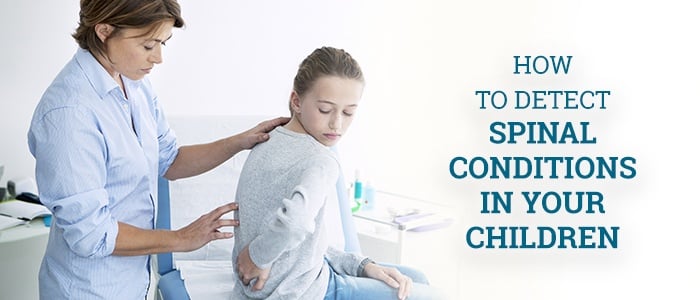
While there's no exact science when it comes to parental detection of spinal conditions in your children, there are some early warning signs that you can look out for. In fact, the earlier you notice changes in your child's back, posture or gait, the easier it is to treat, oftentimes.
Here are four ways in which spinal conditions can be detected in your children.
Flexibility
It's the classic test you likely experienced yourself at some point in school or at home—a test of your ability to bend is a great way to determine early symptoms of conditions such as scoliosis. Traditionally, this test entails standing with arms forward and hands together, bending at the waist and toe-touching. A parent or physician or nurse can then do a check to see if anything feels uneven or asymmetrical. This is a good starter test that can be performed at home to potentially detect early signals of a spinal condition.
Posture
Noticeable changes in posture can also be an early sign parents should take note of in their children. While not always indicative of a spinal condition, it can be a symptom that should be looked into by a physician or nurse. If hip or shoulder placement seems uneven, your child begins to experience a marked slouch or he or she encounters shoulder, waist or hip asymmetry, it might require an orthopedic appointment confirm the cause.
Physical Symptoms
Certain types of spinal conditions carry symptoms beyond back asymmetry. In fact, young children may experience fatigue, shooting pains, feverish conditions or trouble with walking. Pain-related sleepless nights in children younger than six can be a sign it's time to set up an appointment. (Some degree of back pain is more common in very active teenage children—but ongoing symptoms, such as weakness or increased pain, are also a sign it's time to take your adolescent into an orthopedic clinic.)
Lab Testing
Some of the recommended clinical tests that may be ordered for your child to detect spinal conditions could include scanning and x-rays, which can pinpoint fractures, nerve damage or more chronic conditions, and blood tests, which can help to find inflammations and infections. Labs are most widely used to assess for infection and vitamin D deficiency—another potential cause of joint or muscle pain. These tests can help to rule out or identify conditions and assist your doctor in determining a treatment plan.


